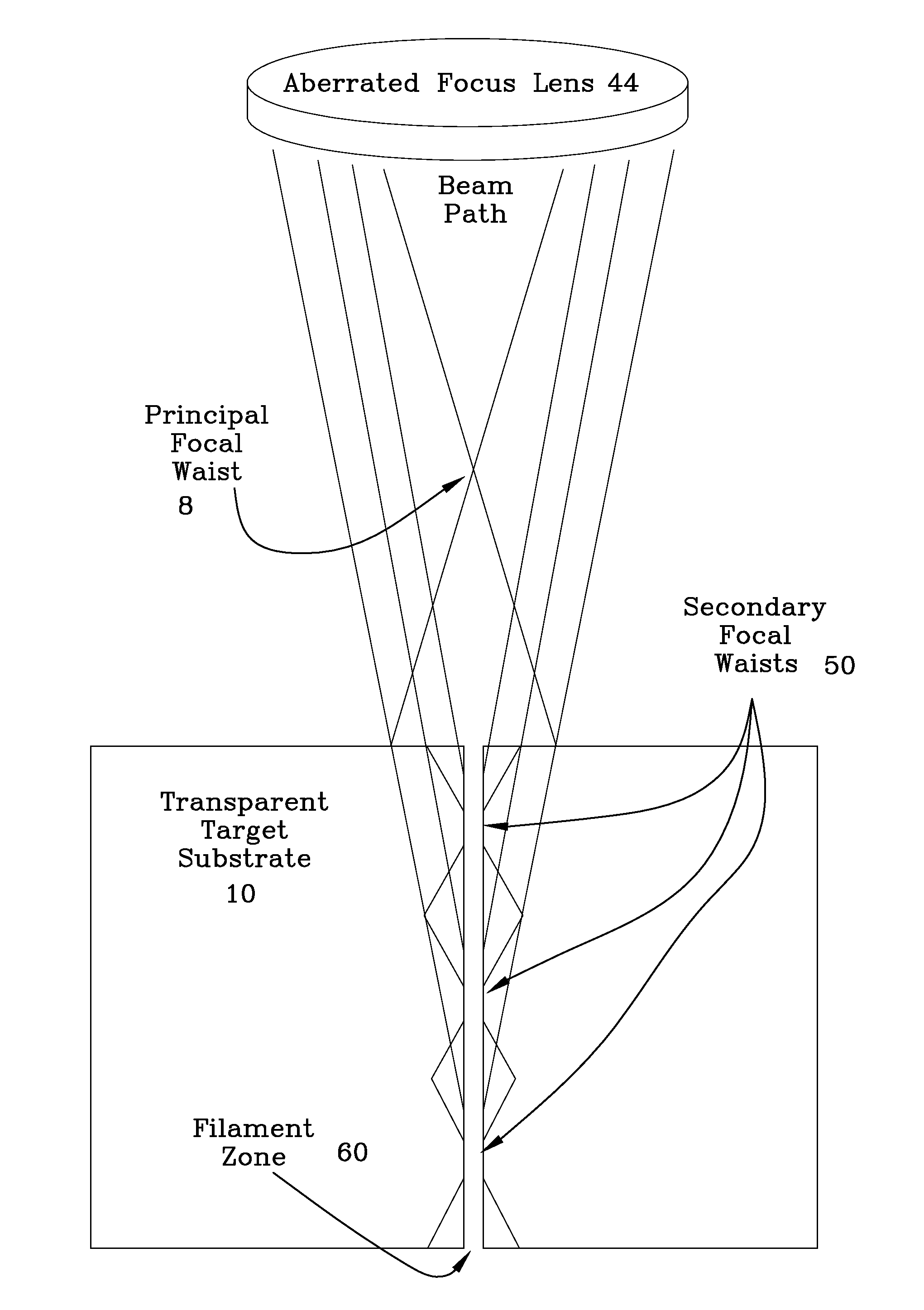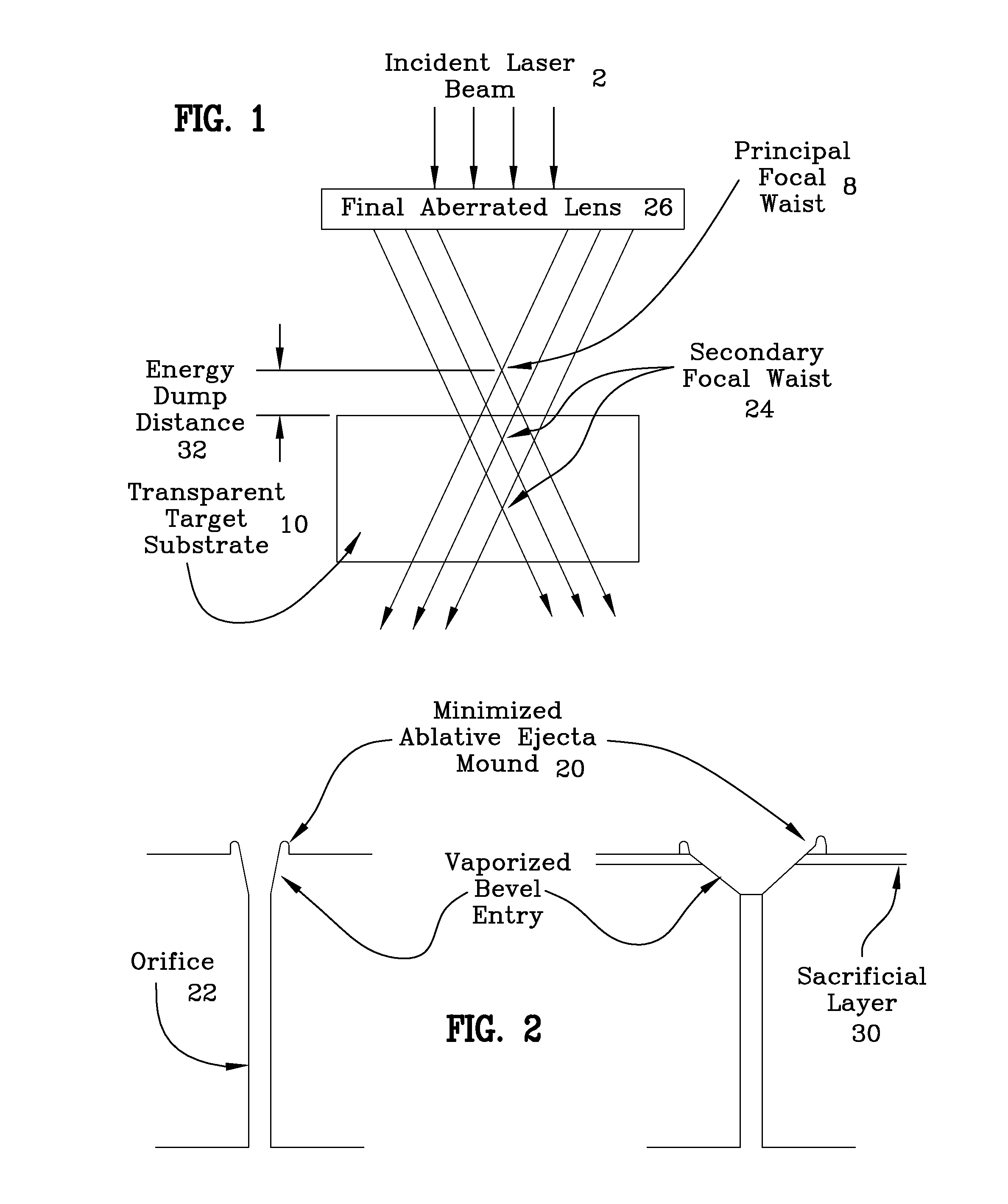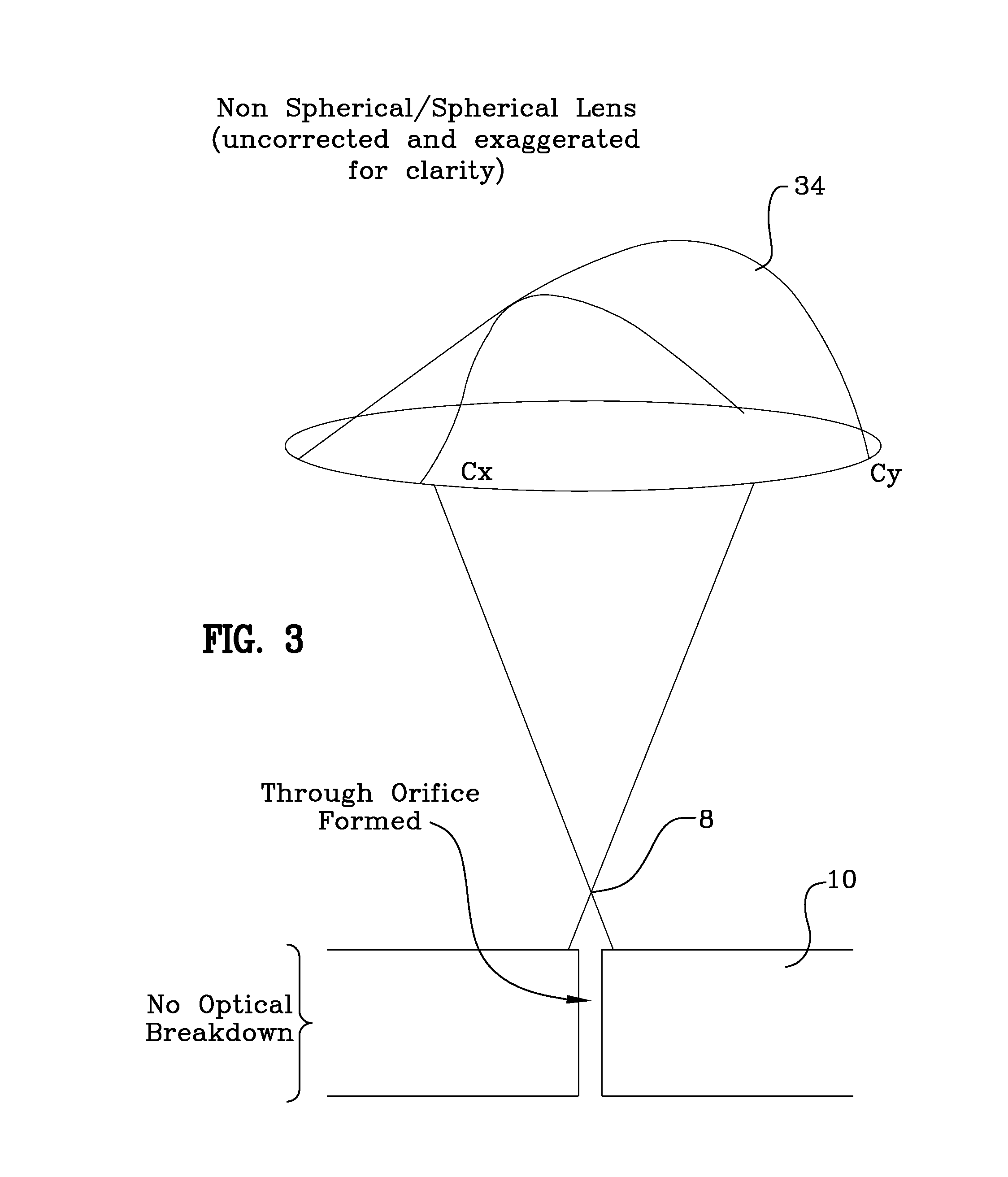Method and apparatus for laser processing of silicon by filamentation of burst ultrafast laser pulses
- Summary
- Abstract
- Description
- Claims
- Application Information
AI Technical Summary
Benefits of technology
Problems solved by technology
Method used
Image
Examples
example 1
[0077]Referring to FIG. 10, a semiconductor wafer 77 that includes several devices 9 is covered with UV tape 78 on the device side. Sapphire 76 is layered on top 77B of the semiconductor wafer 77 as illustrated in FIG. 10. Sapphire is a Kerr medium. Unlike previously known methods of laser material processing, embodiments of the present invention utilize an optical configuration that focuses the incident beam 2 on the bottom or top of the substrate 77 but not within the substrate 77. Due to high peek power of the laser pulses which exceeds 5 MW (sufficient for self focusing in sapphire), the pulses immediately start self focusing on the Kerr medium 76. The nonlinear effects help focus the laser pulses of the laser beam below the diffraction limit and create filamentation in the sacrificial layer made of sapphire 76. The process creates combined white light generation and conical emission 75 just below the transparent silicon target 77.
[0078]The white light spectrum is partially abso...
example 2
[0122]Making thin layers of wafers from a Silcon ingot is challenging. Presently, ingots are sliced using a saw and a lot of material is wasted. A proton beam is used to cut very thin layers of wafers but the proton beam process is expensive and difficult to do in a manufacturing environment.
[0123]Recently, it has been proposed that using optical breakdown by tight focusing of the beam inside the target beneath the top surface a region of defect along the cut line can be created. But separating the thin layer is challenging since there is no first initial scribing location.
[0124]As shown in FIG. 12, it is possible to make a 2 mm long scribe 31 along the edge 90E of the ingot 90 which helps release the thin sheet 90S (wafer) from Silicon ingot 90. Again this can be done using an ultrafast burst laser running above 1.3 μm wavelength or using an OPG or applying Kerr layer on the wall of ingot and using typical wavelength to generate ultrafast burst white light laser as discussed in exa...
example 3
[0125]This example is hole / orifice drilling in silicon via burst of ultrafast laser pulses. If a single burst of ultrafast laser as explained in example 1 is used, it will generate orifices with micron or submicron sizes. Percussion drilling can be done by firing many burst of laser pulses in single location. Photoacoustic compression melts and pushes the material toward the wall of the orifice resulting in much wider holes. Holes / orifices of 20 μm diameter are achieved using 500 laser pulses from bursts of laser pulses running at a repetition rate of 50 kHz, and, each burst of laser pulses has 8 pulses running at 50 MHz. Using a sacrificial layer is useful for a wavelength shift but also helps in preventing orifice taper in the silicon. No taper occurs in the orifices / holes created in the silicon, however, taper occurs in the sacrificial layer. Debris from the sacrificial layer is deposited on the sacrificial layer and leaves the silicon surface clean. If holes / orifices are created...
PUM
| Property | Measurement | Unit |
|---|---|---|
| Length | aaaaa | aaaaa |
| Length | aaaaa | aaaaa |
| Length | aaaaa | aaaaa |
Abstract
Description
Claims
Application Information
 Login to View More
Login to View More - R&D
- Intellectual Property
- Life Sciences
- Materials
- Tech Scout
- Unparalleled Data Quality
- Higher Quality Content
- 60% Fewer Hallucinations
Browse by: Latest US Patents, China's latest patents, Technical Efficacy Thesaurus, Application Domain, Technology Topic, Popular Technical Reports.
© 2025 PatSnap. All rights reserved.Legal|Privacy policy|Modern Slavery Act Transparency Statement|Sitemap|About US| Contact US: help@patsnap.com



